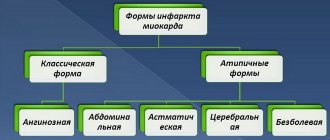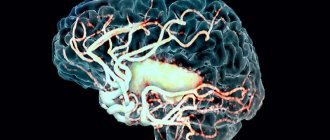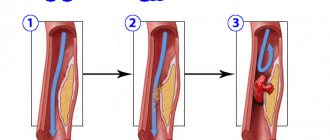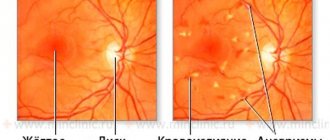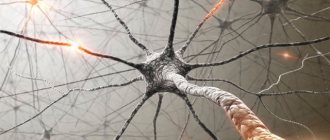Problems with the activity of the heart and blood vessels are common and worry every second person. If they are not detected in time, serious health complications can occur, including death. One of the dangerous pathologies of the cardiovascular system includes diffuse changes in the myocardium. They are detected during diagnostic examinations - echocardiography and electrocardiogram. These studies reflect what changes and disorders occur in the area of the heart muscle (myocardium).
Heart problems can cause serious problems for people
Description of diffuse changes in the heart
The myocardium is a striated type of cardiac muscle that produces contractions to pump blood. Disorders that have a damaging effect on the structure of myocardial cells are called diffuse changes occurring in the myocardium. Moreover, they have a diverse nature, level of expression in myocytes and distinctive manifestations.
The formation of these disorders causes pronounced disturbances in the activity of the heart, a change in the shape of this organ, and a decrease in the degree of myocardial extensibility. Serious diffuse changes in the myocardium on the ECG are detected in patients with symptoms of severe heart failure. But moderate symptoms appear in cases where there are no subjective symptoms in the functioning of the cardiac system.
Prevention measures
Every person should take care of their health and adhere to preventive measures that will reduce the likelihood of developing cardiovascular diseases. The essence of prevention is outlined below:
- the diet should be based on whole grains, vegetables and fruits;
- the amount of sugar and salt, cholesterol and animal fats, saturated fats and trans fats should be kept to a minimum level;
- smoking and alcohol cause great harm to health, the cardiovascular system in the first place;
- an active lifestyle, frequent walks, normalized exercise are the basis of preventive measures;
- timely response to symptoms that indicate heart problems.
Causes of diffuse changes
These abnormalities in the activity of the heart manifest themselves for various reasons, and they can be both harmless and extremely serious for human life. But to establish why diffuse changes in the heart appear, a thorough examination of the patient is required.
Myocarditis is a serious disease that occurs due to inflammation of the heart muscle
Myocarditis
Often, inflammatory changes are provoked by myocarditis. This condition is accompanied by infectious and aseptic inflammation in the area of the heart muscle. In this case, areas with inflammation are diffuse or focal. Manifestations of myocarditis with varying severity occur in the following diseases:
- acute rheumatic fever (rheumatism), which is caused by hemolytic streptococci due to a history of tonsillitis, scarlet fever, and chronic tonsillitis;
- diphtheria, typhus;
- for hepatitis, measles, rubella, Coxsackie and other viruses;
- for pathologies of the autoimmune type.
Dystrophic changes
If dystrophic changes are observed in the activity of the cardiac system, they are formed due to metabolic disorders and disorders of the functioning of heart cells. They often manifest themselves as a result of inflammatory and non-inflammatory pathologies. Many cardiologists also call this condition cardiodystrophy.
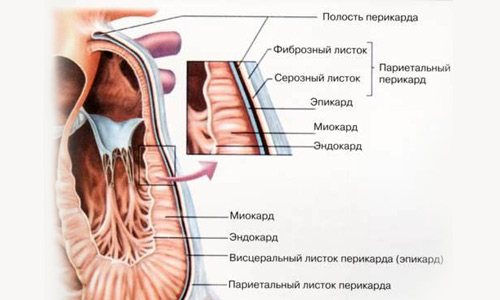
Myocardial dystrophy is another possible disease
It is often observed due to the presence of the following conditions:
- Severe disorders in the activity of the liver and kidneys, which are accompanied by symptoms of failure in these organs. As a result of these pathological processes, an accumulation of toxic components in the blood is observed.
- Diseases of the endocrine system. Common pathologies include manifestations of diabetes mellitus, tumors in the adrenal glands, and hyperfunction of the thyroid gland. These pathologies cause an increase in hormone levels and insufficient absorption of glucose in the heart cells, which provokes the development of an intracellular metabolic disorder.
- Stressful situations.
- Performing increased physical activity.
- Poor nutrition.
- Symptoms of chronic fatigue.

Chronic fatigue often leads to such heart problems.
- Children may suffer from this disorder, which manifests itself as a result of strong emotional and mental stress without sufficient mobility. As a result, signs of pathology such as vegetative-vascular dystonia and cardiac regulation disorders appear.
- Manifestations of anemia. A decrease in the level of hemoglobin in the blood, which in the subsequent period causes a decrease in oxygen in myocardial cells.
- Pathologies of an infectious type with an acute or chronic nature.
- Manifestations of fever.
- Disorders often occur when the body is dehydrated.
- Insufficient level of useful components in food.
- Poisoning with a chronic or acute nature - increased consumption of alcoholic beverages, poisoning at work with chemical elements, and so on.
These manifestations provoke diffuse changes in the myocardium of the left ventricle. But they are revealed only after a complete diagnosis.

Remember that food should be rich in vitamins and minerals
The role of metabolic disorders
Metabolic changes or manifestations of impaired metabolism are also found during ECG studies.
They are usually associated with long-term inflammatory diseases. Especially with impaired absorption capacity in the digestive organs (chronic pancreatitis, enterocolitis).
Metabolic disorders include the development of the atherosclerotic process. After all, in fact, this common disease begins with a disruption in the formation and utilization of lipoproteins in the liver.
The general metabolism suffers with endocrine diseases (diffuse toxic goiter, myxedema, diabetes mellitus, acromegaly).
Such changes are formed with unbalanced monotonous diets, in vegetarians, in athletes (in the absence of a sufficient amount of protein in food), and in hereditary diseases.
Symptoms of diffuse changes
Diffuse changes in the myocardium in the LV region occur for a long time, without manifesting themselves in any way. For this reason, they are identified during a full diagnosis using ECG, ECHO-CG.
In addition, there are some signs:
- painful feelings in the chest area with a pressing and burning character;
- manifestations of disturbances in the activity of the heart rhythm;
- the occurrence of symptoms of shortness of breath when performing minor physical work or at rest;
- swelling in the lower extremities;
- fatigue quickly;
- increased weakness and fatigue.
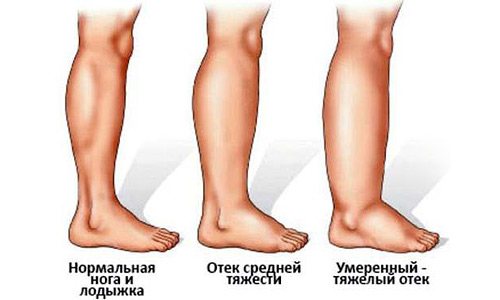
With diffuse myocardial disorders, edema is often observed
It is worth noting that diffuse nonspecific changes in the myocardium with a dystrophic nature have sluggish dynamics, during which no symptoms may appear. But still, the doctor must ask the patient about his condition and listen to his complaints. When performing an electrocardiogram and based on the patient's medical history, the cause of this condition is determined. Therapeutic therapy is prescribed after determining the factors of this process.
Treatment methods
There is no single, universal treatment method that would be equally effective in all cases. Therefore, a full and comprehensive examination of the body is necessary, identifying the root cause and associated diseases.
Medicines
Depending on the diagnostic results, drugs with different effects may be prescribed:
- corticosteroid hormones;
- cardiac glycosides;
- diuretics;
- means that promote metabolism;
- antioxidants;
- antibiotics;
- drugs aimed at treating concomitant diseases;
- vitamin complexes.
Diet
The nutrition of a patient with diffuse changes in the myocardium plays an important role in the treatment process. It is important to stick to your diet and not deviate from the principles of proper nutrition. The rules are simple, everyone can follow them:
- regular meals without fasting or overeating;
- the diet must contain lean proteins, fresh vegetables, fruits, dried fruits, seafood and dairy products with a low fat content;
- fried food is replaced with steamed food;
- the amount of salt is reduced to the possible level;
- Whole grains should form the basis of your daily diet.

Traditional medicine against diffusion
Traditional medicine offers a lot of methods that can be used for therapeutic and preventive purposes. In any case, such methods can be used as an addition to the main treatment. You cannot limit yourself to traditional medicine alone. In addition, each treatment method must be agreed upon with the attending physician. Self-medication can cause enormous harm to the body and aggravate the situation.
Many treatment methods are based on the use of flower honey, hawthorn and rose hips. Tinctures based on heather, dried flowers and motherwort have a beneficial effect on the cardiovascular system. You can also take decoctions of wild strawberry leaves. You can prepare tea, infusions and decoctions based on mint, calendula, dried apricots and walnuts.
Risks of diffuse changes
Do not forget that pronounced diffuse changes in the myocardium can cause serious health problems. If these pathological disorders in the activity of the heart are not detected in time, then serious diseases appear.
Moderate lesions in the area of the heart muscle cause disturbances and a visible deterioration in blood circulation, disruption of oxygen transport to cells, myocardial hypoxia, and irreversible necrotic processes develop in the subsequent period.
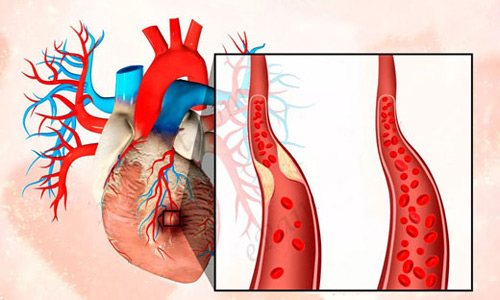
Without timely treatment, it can lead to acute heart attack
The most dangerous condition that develops with changes of this type is acute myocardial infarction. In this case, the clinic of the deviation will be different.
Forecasts
It must be remembered that moderate changes in the myocardium are not a disease. This situation is symptomatic and indicates the presence of a long-term influence of pathologies, which can be of a different nature.
With timely detection of pathology before the moment when connective tissue appears in place of myocardial cells, this process can be stopped. Even cardiomyocytes at this stage can be restored without losing their functionality. But early diagnosis of diffuse myocardial processes is very rare.
In the vast majority of cases, the problem is identified at the stage of development of heart failure. In this case, the process of cardiomyocyte replacement has already started. In most cases, the pathological process can be stopped.
With the development of advanced forms of the disease, a severe stage of heart failure and cardiosclerosis occurs. These diseases cannot be cured. You can only stop their development.
Although diffuse changes in the myocardium are rare, they are dangerous and trigger the development of complex and fatal diseases. Only early diagnosis can correct the situation and save the heart from terrible diseases and irreversible processes.
Diagnostics
It is advisable to carry out diagnosis at the initial stage of the appearance of these disorders. The examination is performed using different techniques, namely:
- conducting standard electrocardiography, this diagnostic method allows you to obtain the most accurate results;
- with the help of echocardiography, the doctor will be able to accurately examine all the distortions that are observed in the reflection of the ultrasound wave in different areas of the muscle fibers of the heart;
Only a doctor can accurately tell and explain what diffuse changes in the myocardium mean on ECG results. Usually, specialists interpret the electrocardiogram, and the cardiologist accurately describes the condition of the heart.

Only a doctor, after examining the results of the cardiogram, can make a diagnosis.
Additionally, specific laboratory tests are recommended for patients. These studies will help identify various disorders in myocardial activity and will complement the overall clinical picture.
A comprehensive diagnosis is required. This approach will help identify even small changes. In addition, the doctor receives accurate data on the functioning of the heart and, if necessary, prescribes effective treatment therapy.
